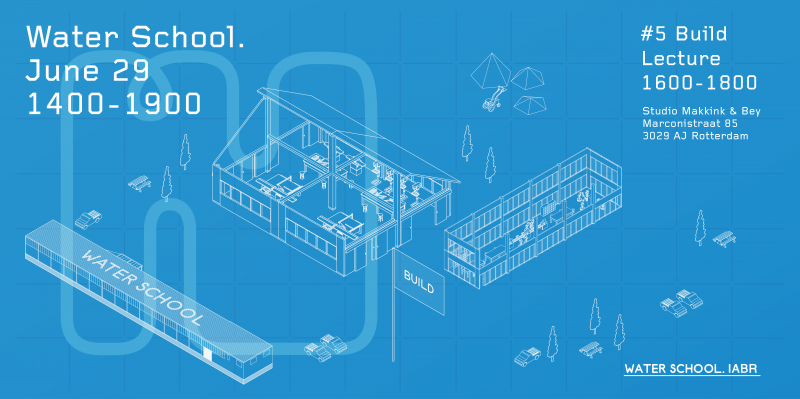
picture: George Brugmans
Starting on June 1, during the biennale, the exhibition will be open to the public on six consecutive Fridays. The Studio will present its findings and lecturers from the cultural, private and administrative sectors will share their views on water and education through presentations and discussions.

Build
The Building Day questions how we can adapt our (future) buildings and cities to the ever-increasing amount of rain, in order to prevent cyclical flooding of neigbourhoods, streets and buildings. Today, strategies are studied which focus on developing novel ways of coping with the increasing amount of (rain)water in cities. Should temporary water basins be integrated into our cities, which will temporarily store the rainwater, in order to disseminate it evenly over time? Or should we abandon the land and start living on water, in order to reserve the land for the much-needed agricultural expansion? How will these conflicting notions influence the design of the Water School building and its surroundings?
The first invited lecturer is Istvan Kenveres, President of the Biopolus Institute in Budapest, Hungary, who states: “Polus in Latin means the pivot, the point around which something turns, and for me Biopolus is a real turning point. It turns the fossil based economy into a bio-based one”.
In the past fifteen years, Biopolus led one of the most exciting breakthroughs in wastewater treatment technology, working with thousands of different species from bacteria through plants, and to even fish, to clean water and wastewater in a beautiful greenhouse environment.
The second invited lecturer, Joost van der Hammen from Nelen & Schuurmans, will provide insights into the challenges cities currently are facing in dealing with (rain)water, and how those can be tackled. Collaborating closely with De Urbanisten, Nelen & Schuurmans developed the “Water Square” at the Benthemplein in Rotterdam, a square which can temporarily store rainwater. Cees-Anton van den Dool from Polderdak has been invited by Van der Hammen to give a short lecture.
RO&AD Architects is an architecture studio whom not only design buildings and bridges, but also consider the ecosystem these are placed in. They will be taking part in the exhibition, showing pictures and technical drawings of their “Mozes Bridge”, a bridge which visually disappears as it’s footpath is located below water level.
location: Studio Makkink & Bey, Marconistraat 85, Rotterdam
date: June 29
the exhibition is open from 2 until 7 pm, the lectures and discussions are scheduled between 4 and 6 pm
language: English